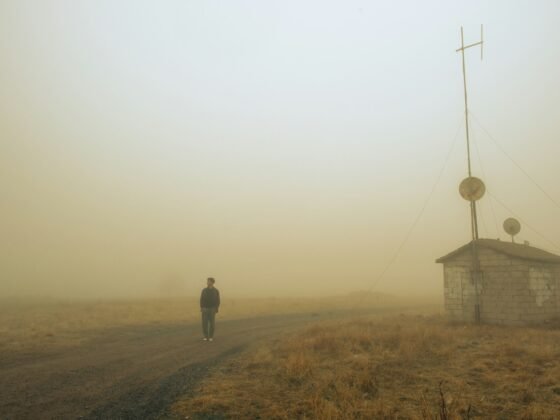Tear-Stained Message
The Steward gently shook me, requesting I turn off my electronic device for landing. I slowly gained consciousness and massaged the kink in my neck. Groggily gathering my belongings, I made my way to the front of the massive airbus. I blinked rapidly, attempting to adjust to the natural light I hadn’t seen in fourteen hours.
My tired skin felt the heat of the desert sun pulsating through the terminal as I neared the exit. I stepped outside and found a taxi; the noticeably robust driver wore an oversized Star of David around his neck. He shared a welcoming smile that made me feel at home as I ducked into the backseat. He spoke of his life in Ramat Gan and how he recently lost his eldest son in a suicide bombing at a local café.
We drove the rest of the way in silence. Thirty-six miles to Jerusalem, and I would soon strengthen my sense of solidarity with Israel. I had disconnected myself with the Jewish people-- one of millions lost, not to genocide, but to assimilation.
I paid the driver twelve shekels and took my first step onto the 4,000-year-old soil. I looked back and shared a genial grin with my new friend.
Upon entering the historic ruins, I shaded my weary eyes as they made their way up the ornate gold menorah that stood guard at the entrance. At its base laid a basket with hundreds of red wool threads. An elderly Israeli woman, dressed in all black, approached me and tied the thin string around my left wrist, while whispering its purpose of warding off evil spirits.
I wandered through the skeletal structures alone, running my tiny fingertips across the massive raw stone that survived interminable battles centuries ago. Each fracture in the limestone represented a
life lost.
Turning the corner I was surprised to see a flood of men and women standing uniformly separated from one another. Grave Israeli policemen patrolled the organized chaos, as the murmur of prayer filled the dry September air.
Searching for an explanation, I discovered a tablet that outlined the history of this iconic piece of Judaism. What stood before me was the Temple Mount-- remnants of the First Temple that was destroyed thousands of years ago and rebuilt for Jews from around the world to come and worship in its shadows.
With two sturdy hands the structure drew me nearer, emitting an overwhelming presence of energy. I inched closer to find tens of thousands of tiny pieces of paper delicately sewn in and out of the wall’s shallow crevices. Hopes, dreams and fears were wedged in every accessible crack in the rock.
After my grandfather passed away, my family lost its faith in religion. I knew he would appreciate me being here as I scribbled a message to him signed, “I will never forget today or you.” I now understood the meaning of the Wailing Wall; my tears stained the note I left behind.
D Simkin










